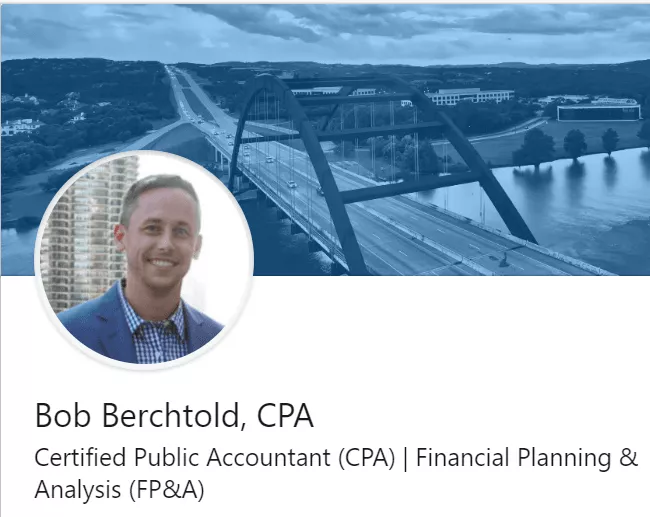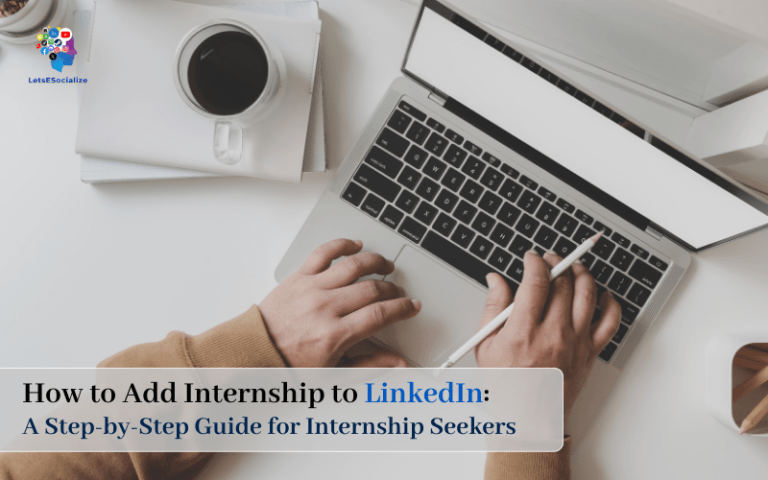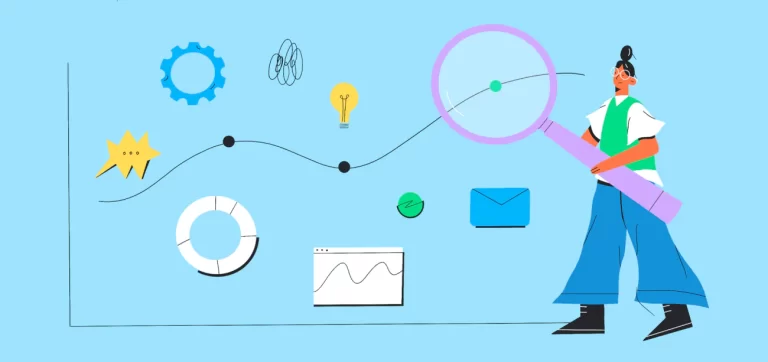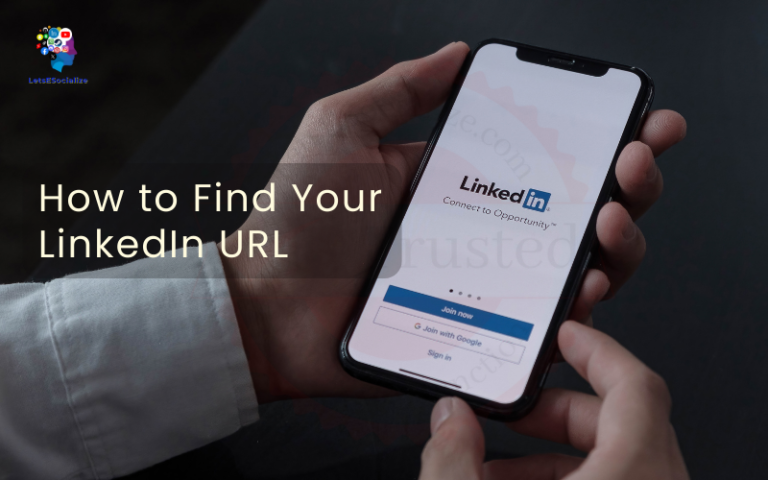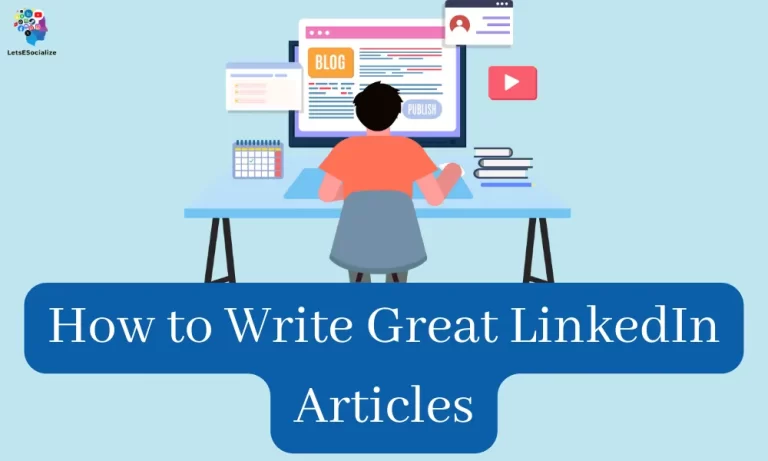LinkedIn is the world’s largest professional networking platform with over 900 million users. With so many users, there are certain unwritten rules of etiquette to follow on LinkedIn to maintain your professional brand and build relationships.
One of the most important guidelines is the “411 rule” for posting content. In this comprehensive guide, we’ll explain what the 411 rule is, why it matters, and how to apply it to maximize your LinkedIn presence.
Table of Contents
What is the 411 Rule?

The LinkedIn 4-1-1 Rule refers to a content-sharing ratio for engaging your network effectively. It suggests the following content distribution on your LinkedIn feed:
- 4: Educational or entertaining content: This category includes informative articles, industry updates, interesting research, thought-provoking questions, or even jokes/memes relevant to your field. The aim is to add value to your audience and establish yourself as a knowledgeable figure.
- 1: Soft promotional content: Share news about your company, upcoming events you’re involved in, or un-gated content you’ve created. This allows you to stay top-of-mind without being overtly self-promotional.
- 1: Hard promotional content: This consists of direct promotions like self-serving posts with a clear call to action. Think blog post links, event registrations, or special offers.
The key takeaway is to:
- Be valuable first, and promotional second: Focus on building trust and providing insights by sharing information your audience wants to see.
- Maintain variety: Keep your content diverse to avoid sounding too self-promotional or boring.
- Balance self-promotion: Don’t overwhelm your network with your content.
The 4-1-1 Rule is a flexible guideline, not a strict formula. You can adjust the ratio based on your specific goals and audience. For example, if you’re launching a new product, you might temporarily increase your hard promotional content.
Here are some additional tips for using the 4-1-1 Rule effectively:
- Choose high-quality content: Share articles from reputable sources and create content that is insightful and well-written.
- Engage with your audience: Respond to comments and questions, and participate in conversations around your posts.
- Post consistently: Regularly sharing content will help you stay top-of-mind with your network.
By following the 4-1-1 Rule, you can build a strong and engaged presence on LinkedIn and achieve your professional goals.
I hope this clarifies the LinkedIn 4-1-1 Rule for you! Let me know if you have any other questions.
Also Read – LinkedIn Pulse Comprehensive Guide
Why the 411 Rule Matters

The LinkedIn 4-1-1 Rule matters for several reasons:
1. It promotes genuine engagement:
- By focusing on sharing valuable, educational, and entertaining content (four parts), you attract and engage your audience with genuine interest. This builds trust and credibility, making them more receptive to your occasional promotional messages.
- Compared to a constant stream of self-promotion, the 4-1-1 approach fosters real conversations and interactions, turning your network into a community rather than just a marketing channel.
2. It balances value and promotion:
- The rule discourages overwhelming your audience with your agenda. By limiting direct promotions (one part), you avoid sounding pushy or self-serving and maintain a natural balance.
- People are more likely to see your promotional content when it’s interspersed with interesting and helpful information, increasing its effectiveness.
3. It showcases your expertise:
- Sharing quality educational content allows you to demonstrate your knowledge and insights within your industry. This establishes you as a thought leader and attracts potential clients, partners, or employers.
- The valuable information you share reinforces your professional brand and makes your promotional messages more impactful.
4. It stands out from the noise:
- In a competitive online space like LinkedIn, where many profiles focus solely on self-promotion, the 4-1-1 rule helps you stand out.
- By offering genuine value and fostering authentic connections, you attract a more engaged audience and build a stronger network than those relying solely on promotion.
5. It’s flexible and adaptable:
- The 4-1-1 rule is a guideline, not a rigid formula. You can adjust the ratio based on your specific goals and audience.
- This flexibility allows you to tailor your content strategy for different situations, while still maintaining a healthy balance between engagement and promotion.
Overall, the LinkedIn 4-1-1 Rule provides a framework for building a successful and sustainable presence on the platform. By focusing on genuine value and engagement, you can attract a more engaged audience, establish yourself as an expert, and ultimately achieve your professional goals.
How to Apply the 411 Rule

Putting the 411 rule into practice requires sharing the right mix of posts consistently over time. Here are tips for each type of content:
Share Valuable Insights
Here are the steps on how to apply the 4-1-1 Rule on LinkedIn:
- Identify Your Goals and Audience:
- Define what you want to achieve on LinkedIn (e.g., generate leads, build brand awareness, establish expertise).
- Understand your target audience’s interests and needs to curate content that resonates with them.
- Plan Your Content Mix:
- Schedule your posts using the 4-1-1 ratio:
- 4 posts of educational or entertaining content
- 1 post of soft promotional content
- 1 post of hard promotional content
- Consider using a social media scheduling tool to automate this process.
- Find and Share High-Quality Content:
- Sources for educational content: industry publications, reputable news outlets, and thought leaders in your field.
- Share content that is relevant, informative, and engaging.
- Use a mix of text, images, and videos to keep your posts visually appealing.
- Create Your Content:
- Write articles, share insights, or create videos that showcase your expertise.
- Offer valuable information that benefits your audience.
- Include a call to action in your promotional posts to encourage engagement (e.g., visit a website, download a resource, sign up for a webinar).
- Engage with Your Audience:
- Respond to comments and questions on your posts.
- Participate in conversations on other people’s posts.
- Build relationships and networks with people in your industry.
- Track Your Results:
- Use LinkedIn’s analytics tools to see how your posts are performing.
- Analyze which types of content are getting the most engagement.
- Adjust your content strategy based on your results to optimize performance.
Additional Tips:
- Personalize Your Posts: Add your thoughts and insights to the content you share.
- Use Visuals: Images and videos can help your posts stand out in the feed.
- Experiment with Different Types of Content: See what works best for your audience.
- Be Consistent: Post regularly to stay top-of-mind with your network.
By following these steps and tips, you can successfully apply the 4-1-1 Rule to achieve your LinkedIn goals and build a strong, engaged professional network.
411 Rule Posting Cadence Examples

Here are some examples of posting cadences that follow the 4:1:1 ratio:
Daily
- 1 promotional post
- 4 value posts
- 1 shared post
3 Times Per Week
- Week 1: 1 promotional, 4 value, 1 shared
- Week 2: 1 promotional, 4 value
- Week 3: 1 promotional, 4 value, 1 shared
Weekly
- Week 1: 1 promotional, 4 value
- Week 2: 1 promotional, 1 shared
- Week 3: 1 promotional, 4 value
- Week 4: 1 promotional, 1 shared
The exact cadence depends on the volume you can consistently sustain. The key is maintaining the general 4:1:1 ratio over time.
More LinkedIn Posting Best Practices

In addition to the 411 rule, here are some other LinkedIn best practices to keep in mind:
Post at optimal times – The best times to post are Tuesday – Thursday during business hours when engagement is highest.
Use relevant hashtags – This helps surface your posts and participate in larger conversations.
Post a variety of content formats – Mix up text-based posts with video, images, presentations, etc.
Keep an editorial calendar – Plan your posts and themes to maintain consistency.
Cross-promote – Share your LinkedIn posts on other social channels to maximize reach.
Analyze performance – Review analytics to see which posts resonate best and what can be improved.
Following these best practices along with the 411 rule will improve your overall LinkedIn presence.
LinkedIn Post Frequency Limits

There aren’t any explicit post frequency limits set by LinkedIn, but there are some unofficial guidelines and practical considerations to keep in mind:
Guidelines:
- 4-1-1 Rule: This popular approach suggests a ratio of 4 educational/entertaining posts, 1 soft promotional post, and 1 hard promotional post. This helps maintain a balance between valuable content and your agenda.
- Quality over quantity: Focus on creating high-quality, engaging content rather than spamming your network with frequent posts.
- Consistency matters: Aim for regular posting (2-5 times a week) to stay top-of-mind, but avoid bombarding your audience.
- Avoid excessive posting: Posting too frequently, like multiple times a day, might be flagged as spam by LinkedIn’s algorithms and decrease your visibility.
Practical considerations:
- Engagement level: If your posts consistently spark high engagement (likes, comments, shares), you can potentially post more frequently.
- Target audience: Consider your audience’s activity times and adjust your posting schedule accordingly.
- Content type: Short updates or stories might be posted more often than in-depth articles.
- Personal style: Some people are comfortable posting daily, while others prefer a slower pace. Find what works best for you and your audience.
Additional tips:
- Schedule your posts: Tools like LinkedIn’s built-in scheduler can help you plan your content strategy and avoid last-minute spamming.
- Track your results: Use LinkedIn analytics to see which types of content resonate most with your audience and adjust your frequency accordingly.
- Take breaks: It’s okay to take breaks from posting or reduce your frequency if you feel overwhelmed or lack content ideas.
Remember, the key is to find a balance between providing valuable content and promoting yourself without overwhelming your audience.
I hope this clarifies the post frequency considerations on LinkedIn!
411 Rule vs. 4-1-1 Rule – What’s the Difference?

Some people reference the “4-1-1 rule” rather than the “411 rule” when discussing this LinkedIn guideline. What’s the difference?
Essentially, they refer to the same principle of posting 4 value-focused updates for every 1 promotional post and sharing 1 post from others.
The numbers are simply written in two different ways:
- 411 rule – Numeric digits (4:1:1 ratio)
- 4-1-1 rule – Hyphenated numbers (4-1-1 ratio)
Both terms refer to the same general etiquette practice. Use whichever format you prefer!
Also Read – How to Showcase Your Expertise with LinkedIn Articles: A Comprehensive Guide
LinkedIn Connection Request Etiquette

Making a good first impression on LinkedIn is crucial, especially when sending connection requests. Here are some key points to remember for LinkedIn connection request etiquette:
Personalization is key:
- Avoid generic messages like “I’d like to connect” or “Let’s connect.” Take a moment to review the person’s profile and mention something specific about their work, experience, or achievements that caught your attention.
- If you have a mutual connection, mention them in your message and how you know them.
- Explain why you want to connect, whether it’s to learn more about their work, explore possible collaborations, or simply expand your network.
Keep it brief and professional:
- Aim for a concise message, ideally a few sentences long. Get your point across without rambling or sounding overly formal.
- Proofread your message before sending it, ensuring there are no typos or grammatical errors.
Respect boundaries:
- Don’t send mass connection requests or connect with people you don’t know. Focus on building genuine connections with individuals you have a shared interest with.
- If your request gets ignored, don’t send multiple messages or pester the person. Respect their decision and move on.
Additional tips:
- Use a professional-looking headshot in your profile picture.
- Make sure your profile is complete and up-to-date, highlighting your skills and experience.
- Engage with the person’s content after connecting, such as liking or commenting on their posts. This shows you’re genuinely interested in their work.
- Avoid using any discriminatory language or making inappropriate comments.
By following these tips, you can send thoughtful and professional connection requests that are more likely to be accepted and build meaningful relationships on LinkedIn.
Remember, quality connections are more valuable than a large number of connections. Invest time and effort in building genuine relationships with the right people, and your LinkedIn network will blossom in a much more meaningful way.
I hope this clarifies LinkedIn connection request etiquette for you! Let me know if you have any other questions.


